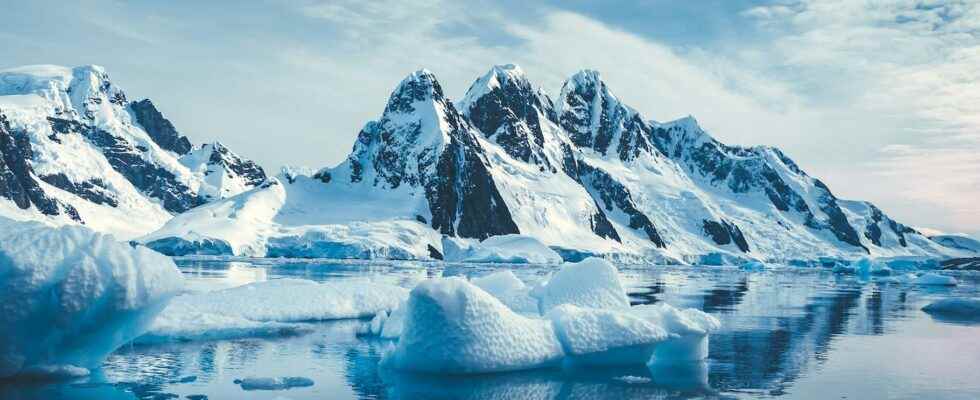After experiencing one of its coldest winters since weather records began, Antarctica is currently facing extremely high temperatures, up to 20 ° C above seasonal averages. The same heat anomalies concern the other pole, on the Arctic side, with up to 30 ° C higher than the seasonal averages.
You will also be interested
[EN VIDÉO] Antarctica: a gigantic sheet of ice breaks out This video, produced from radar images acquired by the TerraSAR-X satellite, shows the evolution of the formation of one of the largest known icebergs. Over the weeks and months, the satellite follows its evolution, from the appearance of the fault in the Larsen C ice shelf to its fragmentation.
L’Antarctic is known for its freezing climate: it is in this region that we record the lowest temperatures in the world, with -89.2 ° C recorded in Vostok on July 21, 1983, and down to -93.2 ° C estimated by a satellite of the Nasa on August 10, 2010. Located in the southern hemisphere, theAntarctic is in the middle of the summer, from October to February. At that time light of the day is omnipresent and the Sun does not go to bed on December 21. This phenomenon is called the midnight sun. It is therefore at this time of the year that the area experiences its highest temperatures of the year, with a maximum in January and February: from -10 to -30 ° C on average, sometimes down to 0 ° C. C and even more.
Mid-December, a peak of ” heat Has occurred with temperatures above seasonal averages of 15 to 20 ° C locally.
L’temperature anomaly is less striking in recent days, but we still noted -20 to -22 ° C at the best of the day in Vostok, one of the coldest areas, 7 ° C above the seasonal averages. In general, current temperatures are 6 to 15 ° C above seasonal averages. The most abnormally high temperatures are currently found in southern Antarctica, while the north of the region, near the ocean, enjoys temperatures in line with seasonal norms.
Remember that last year, the summer was historic in Antarctica, with a record temperature of 18.3 ° C recorded in Esperanza February 6, 2020.
From arctic side, in the middle of winter, the situation is the same these days. At this time, the average temperatures generally oscillate from -20 to -40 ° C in this part of the world. In Greenland, temperature variations are currently remarkable, of the order of 20 to 30 ° C above the seasonal averages. In Nuuk, the capital, we recorded 13 ° C on December 20, against an average temperature of -5.3 ° C. In Qaanaaq, in northern Greenland, it was 8.3 ° C, compared to an average of -20.1 ° C. Blame it on a “Foehn stroke”, the persistence of a wind dry and hot for several days.
The winter of 2021 had been freezing in Antarctica
The climate of this year 2021 certainly holds some surprises in Antarctica: the winter of 2021 (from June to September) was one of the coldest ever. While the North Pole recorded one of the smallest sea ice extension records, the opposite happened at the South Pole: according to the British Antarctic Survey, the temperatures of winter 2021 were the lowest in more than 60 years, due to a polar vortex particularly large and intense. According to National Snow and Ice Data Center In the United States, the average winter temperature was 3.4 ° C below the 1981-2010 average, with a region-wide temperature of -62.9 ° C. The most extreme cold was recorded in Vostok with -79.4 ° C on September 30, 2021.
As agreed by the scientific community, the climate change therefore seems to amplify climate extremes and “blocking” situations weather report lead to episodes of intense heat or extreme cold. This is already true in regions with already extreme weather conditions by definition, such as Antarctica and the Arctic.
Interested in what you just read?
.
fs11
